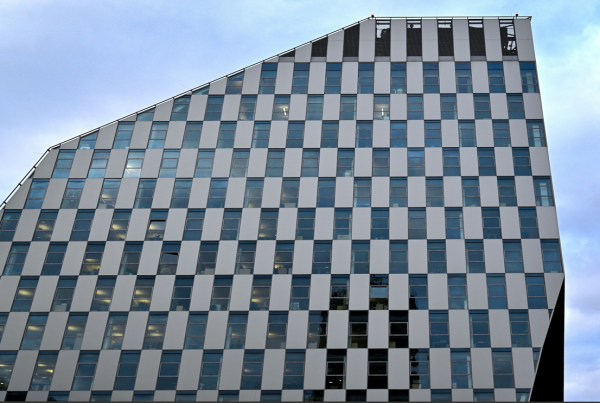With the effects of climate change upon us, designers are making climate-proof buildings. One family takes a step further with an apocalypse-proof castle.
There’s this reality show on National Geographic Channel airing these days, and it’s about a castle and the family building it.
Not just an ordinary castle, mind you. It’s a Doomsday Castle, which as the name implies, is a castle for taking refuge when doomsday comes. One might think that a building meant to withstand such an extreme scenario would be as sophisticated and modern as possible, but in this case the family decided they’ll have a good old medieval-style fortress, brick by brick. There’s a moat and drawbridge, portcullis, and even an underground bunker.
The father, Brent Sr. (no last name mentioned for anonymity purposes), leads this ambitious castle-building endeavor. Being a retired Army officer, he’s also taken it upon himself to train his family in various survival skills. There are lessons in making fire, getting water through a solar pump, raising chickens for food, and many others. Everything you need to know to survive the apocalypse.
* * *
Climate-proof Buildings and Doomsday-proof Castles
Throw away any illusion about architectural design. There’s nothing elegant or fancy about the Doomsday Castle. It’s a no-frills, pragmatic building, and it’s a sturdy, impregnable, and very safe one to be sure. It begs to be taken seriously.
We’ve always put a premium on safety when building homes for our family, whether it’s reinforcing the foundation, the floor, the roof, the entire thing. In places where extreme forces of nature such as typhoons, hurricanes, wildfires, and earthquakes are the norm, there’s good sense in making our dwellings extra impact-resistant and heavy-duty. And we don’t just have climate-proof buildings, we have it crime-proofed as well.
But a faux castle meant to survive doomsday might be exaggerating things a bit. Or is it?
Brent Sr. believes an EMP (electromagnetic pulse)—either man-made (from a nuclear warhead) or all-natural (from an extremely generous solar flare) will bring about doomsday, suddenly plunging the world into a pre-electricity, pre-Internet medieval darkness and helplessness. That’s why the choice of a medieval castle is so fitting.
In a way, Doomsday Castle represents not just one family’s paranoia/concern for their safety, but the current state of things as well. It’s also a clear sign of the times. In the old days, we built our dwellings out of pure simple need, for our shelter and protection. As we evolved, lots of other factors influenced our built world—aesthetics, comfort, luxury, safety, among other things. And yes, sustainability too. But with Doomsday Castle, everything is back to basics. Once again, it’s all about shelter and protection. And there’s certainly nothing wrong with that.
In this age when the consequences of climate change are upon us, we can no longer just rely on the old tested ways of designing climate-proof buildings.
* * *
It’s worth noting that combat training is included in their survival skills lessons, specifically learning how to use a crossbow and a catapult. Brent Sr. anticipates chaos during doomsday and lots of rioting people wanting to have a piece of his castle and its provisions, so what better way to defend their fortress than with matching medieval weapons.
Of course, there’s the implicit notion that someday those crossbows and catapults just might be used for real, which is a bloody prospect of course. It’s gruesome, yes, but in a doomsday scenario where survival of the fittest is the rule, there’s nothing else we can do. Thankfully, National Geographic elegantly keeps things educational and entirely theoretical in the show.
Even if doomsday doesn’t arrive soon, and the family simply finds themselves cooped up in a castle for no reason at all, at least they’ve been prepped for good. If anything they come away with valuable lessons on how to live off grid which will hopefully last their whole lives.










